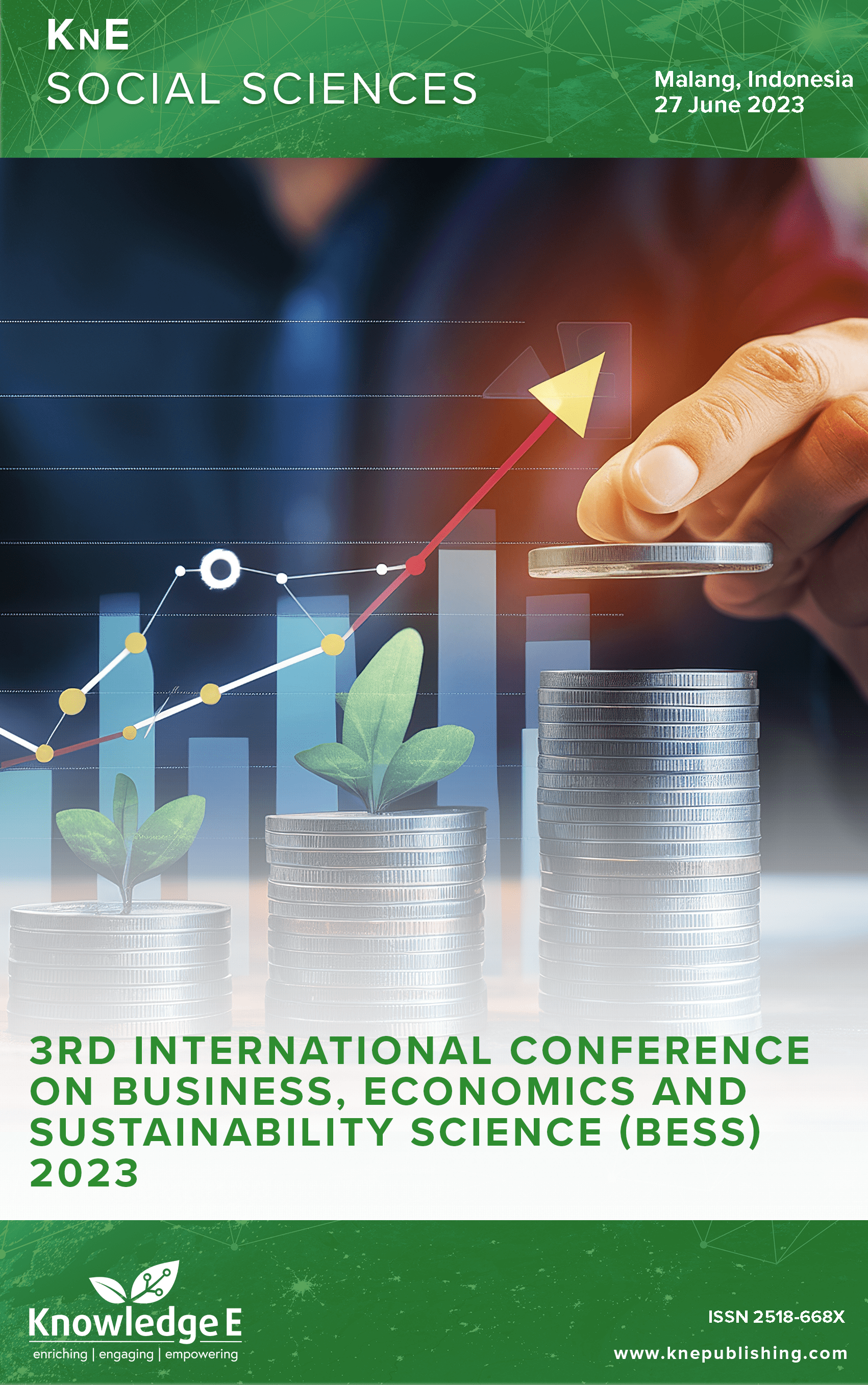The Impact of Population and Unemployment Rates on Economic Growth and Poverty in East Kalimantan from 2011 to 2023
DOI:
https://doi.org/10.18502/kss.v9i21.16738Abstract
Economic growth serves as a fundamental gauge for assessing the progress of a region’s economic development within a specific time frame, primarily driven by production activities. In the context of Indonesia, the economic growth of East Kalimantan Province stands as a positive indicator. It ranks among the top 10 provinces in the country, boasting a growth rate of 3.18%. Nevertheless, this positive growth is juxtaposed with a concerning poverty rate of 6.31%, signifying areas within East Kalimantan Province that require focused attention. One of the prominent contributing factors to this high poverty rate in East Kalimantan Province is the combined influence of the total population and the open unemployment rate (TPT). This composition plays a pivotal role in the region’s poverty scenario. This narrative aims to examine the direct correlation between population size, unemployment rates, and economic growth in East Kalimantan Province. Additionally, it endeavors to analyze how population numbers and unemployment rates, either directly or indirectly, impact poverty levels through their influence on economic growth in the same province. The dataset utilized in this study comprises secondary time series data spanning from 2011 to 2022, sourced from the BPS of East Kalimantan Province. Employing the path analysis method through SPSS 25 analysis tools, this research concludes that population size and the unemployment rate exert a direct influence on economic growth in East Kalimantan Province. However, their direct effects on poverty levels, along with economic growth, do not show significant correlations. Interestingly, the indirect effect of population size and unemployment rates on poverty levels, mediated through economic growth, is discernible. This suggests that while these factors may not directly impact poverty rates, their influence is manifest when channeled through the conduit of economic growth. The practical implications and theoretical contributions of this study will be further developed in subsequent research endeavors.
Keywords: population, unemployment rates, economics growth, poverty
References
Banerjee SB, Jackson L. Microfinance and business of poverty reduction: critical perspectives from rual Bangladesh. Hum Relat. 2017;70(1):63–91. DOI: https://doi.org/10.1177/0018726716640865
BPS – Statistics of Kalimantan Timur Province. (2011). Kalimantan TimurProvince in Figures.
BPS – Statistics of Kalimantan Timur Province. (2012). Kalimantan TimurProvince in Figures.
BPS – Statistics of Kalimantan Timur Province. (2013). Kalimantan TimurProvince in Figures. DOI: https://doi.org/10.1142/9789814504867_0016
BPS – Statistics of Kalimantan Timur Province. (2014). Kalimantan TimurProvince in Figures.
BPS – Statistics of Kalimantan Timur Province. (2015). Kalimantan TimurProvince in Figures.
BPS – Statistics of Kalimantan Timur Province. (2016). Kalimantan TimurProvince in Figures.
BPS – Statistics of Kalimantan Timur Province. (2017). Kalimantan TimurProvince in Figures.
BPS – Statistics of Kalimantan Timur Province. (2018). Kalimantan TimurProvince in Figures.
BPS – Statistics of Kalimantan Timur Province. (2019). Kalimantan TimurProvince in Figures.
BPS – Statistics of Kalimantan Timur Province. (2020). Kalimantan TimurProvince in Figures.
BPS – Statistics of Kalimantan Timur Province. (2021). Kalimantan TimurProvince in Figures.
BPS – Statistics of Kalimantan Timur Province. (2022). Kalimantan TimurProvince in Figures.
Cheyne C, O’Brien M, Belgrave M. Social Policy in Aotearoa New Nealand: A Critical Instroduction. Auckland: Oxford University Press; 1998.
Djojohadikusumo S. Dasar Teori Ekonomi Pertumbuhan dan Ekonomi Pembangunan. LPES; 1993.
Irwan dan M. Suparmoko, Ekonomika Pembangunan Edisi Keenam. BPFEYogyakarta, 1996, h.88
Mankiw N. Greogry, Pengantar Ekonomi Makro. Edisi Ketiga. Salemba Empat; 2006.
MHLW (Ministry of Health, Labour and Welfare of Japan) (1999), Annual Report on Health and Welfare, MHLW.
Nanga Muana, Makroekonomi Teori, Masalah Dan Kebijakan. Raja Grafindo Persada, 2001, h.253.
Nugroho, I dan R. Dahuri. 2004. Pembangunan Wilayah (Perspektif Ekonomi, Sosial dan Lingkungan. Pustaka LP3ES.
Tibyan. 2010. Analisis Program Penanggulangan Kemiskinan Di Kabupaten Sragen, Tesis Universitas Sebelas Maret.
Yulianto, Trimo. 2005. Fenomena Program-Program Pengentasan Kemiskinan Di Kabupaten Klaten (Studi Kasus Desa Jotangan Kecamatan Bayat). Tesis: Universitas Diponegoro.

